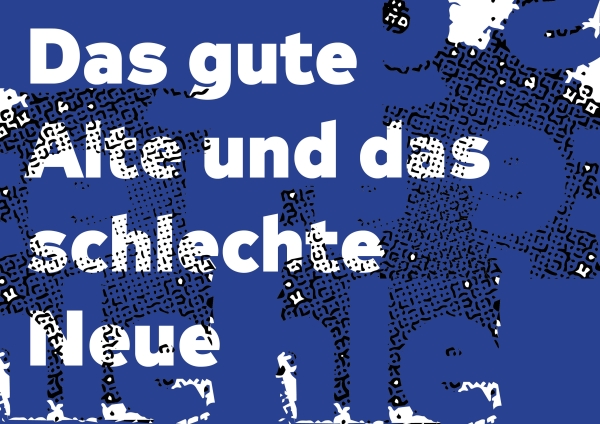This lecture examines the rise of research-based
art, offering a genealogy for its emergence in the 1990s. It argues that changes within this genre are partially tied to the
reception of post-structuralist theory in art schools in the 1980s, and partly to technological developments in information
management since the late 1990s.
The viewer’s reception of research-based art has also shifted
over these three decades, in tandem with an attention economy. The paper offers a critique of this artistic tendency: its
post-hermeneutic approach, its reconfiguration of spectatorship, and its exacerbation of (rather than resistance to) information
overload.
„Das gute Alte und das schlechte Neue“
Am 25. August 1938 notierte Walter Benjamin in seinem Tagebuch:
„Eine brechtsche Maxime: Nicht an das Gute Alte anknüpfen, sondern an das schlechte Neue.” Wie können wir Kunst und Kunsttheorie
in Zeiten der Krisen neu formulieren?
Die Kategorien des „Politischen” und des „Sozialen”, an denen sich künstlerische
Praxis seit Jahrzehnten orientiert hat, sind von tiefgreifenden Veränderungen betroffen. Dies verlangt eine kritische Überprüfung
vertrauter künstlerischer und vermittlungsbezogener Praktiken.
Entlang Benjamin diskutieren wir den Widerhall der Geschichte
im „schlechten Neuen”. Entlang Brecht, wie wir dieses adaptieren und verändern können.
im Rahmen von
Political
Futures, Kunsthalle Wien.
Organisiert von Eva Kernbauer, Kunstgeschichte und FWF Projekt „A Matter of Historicity“,
P 27877-G26 & Universität für angewandte Kunst Wien
Claire Bishop is an art historian, critic, and professor
in the art history department at CUNY Graduate Center, New York since September 2008. Bishop is the author of Artificial Hells:
Participatory Art and the Politics of Spectatorship (2012) and is a contributor to art journals including Artforum and October.
She is known as one of the central theorists of participation in visual art and performance.




